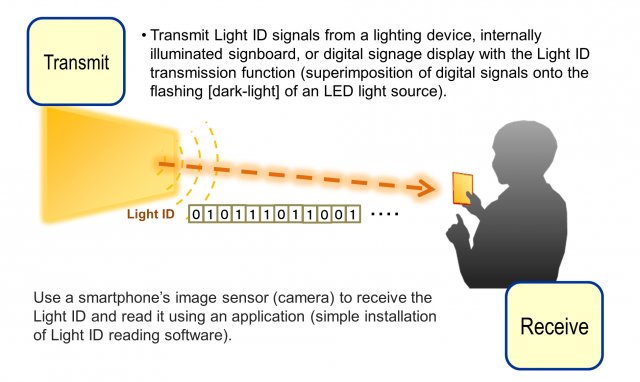
Nov 14, 2025
- Company
- Stories
- Technology
- EXPO 2025
- R&D
- Perovskite solar cells
- Panasonic GREEN IMPACT
- Editor's picks
- Hydrogen Energy Solutions

Las Vegas, U.S. - Information is received by reading visible light ID from digital signage or LED illumination(Light IDs are like barcodes or QR codes written in light). This technology is useful in crowded area where it can be difficult to access IDs.
Panasonic Corporation has pushed the envelope of visible light communication technology and developed the new light ID (identifier) technology. Light ID using conventional visible light communication technology had a dilemma. Transmission rate was very low (approx. 10+bps) using a camera installed in a smartphone as a receiver, on the other hand, a special light receiving device is required for high-speed communication. It hampers the spread of visible light communication. But the newly developed technology only requires users to download an app onto their smartphones, and also realizes transmission rates that are couple hundred times higher (several kbps). The signal source is a flashing white LED of several thousand hertz and it can be installed in digital signage as a backlight as well as spotlights for works of art in museums and products in stores.
The new visible light ID technology boasts the following advantages:
Panasonic's newly developed visible light ID technology is expected to play an active role in various places. It sends valuable information for foreign tourists at a train station or visitors to facilities such as a museum and exhibition.
The technology also helps to realize effective Online to Offline (O2O) marketing.
# # #
The content in this website is accurate at the time of publication but may be subject to change without notice.
Please note therefore that these documents may not always contain the most up-to-date information.
Please note that German, Spanish and Chinese versions are machine translations, so the quality and accuracy may vary.